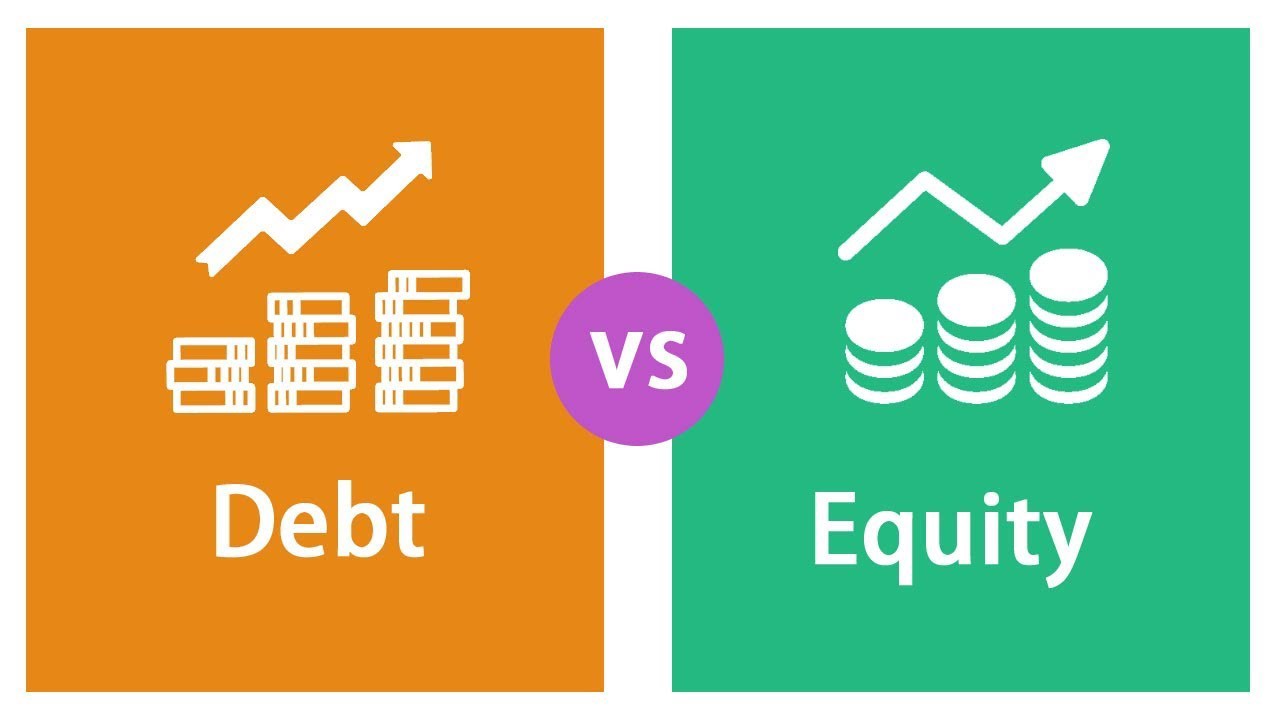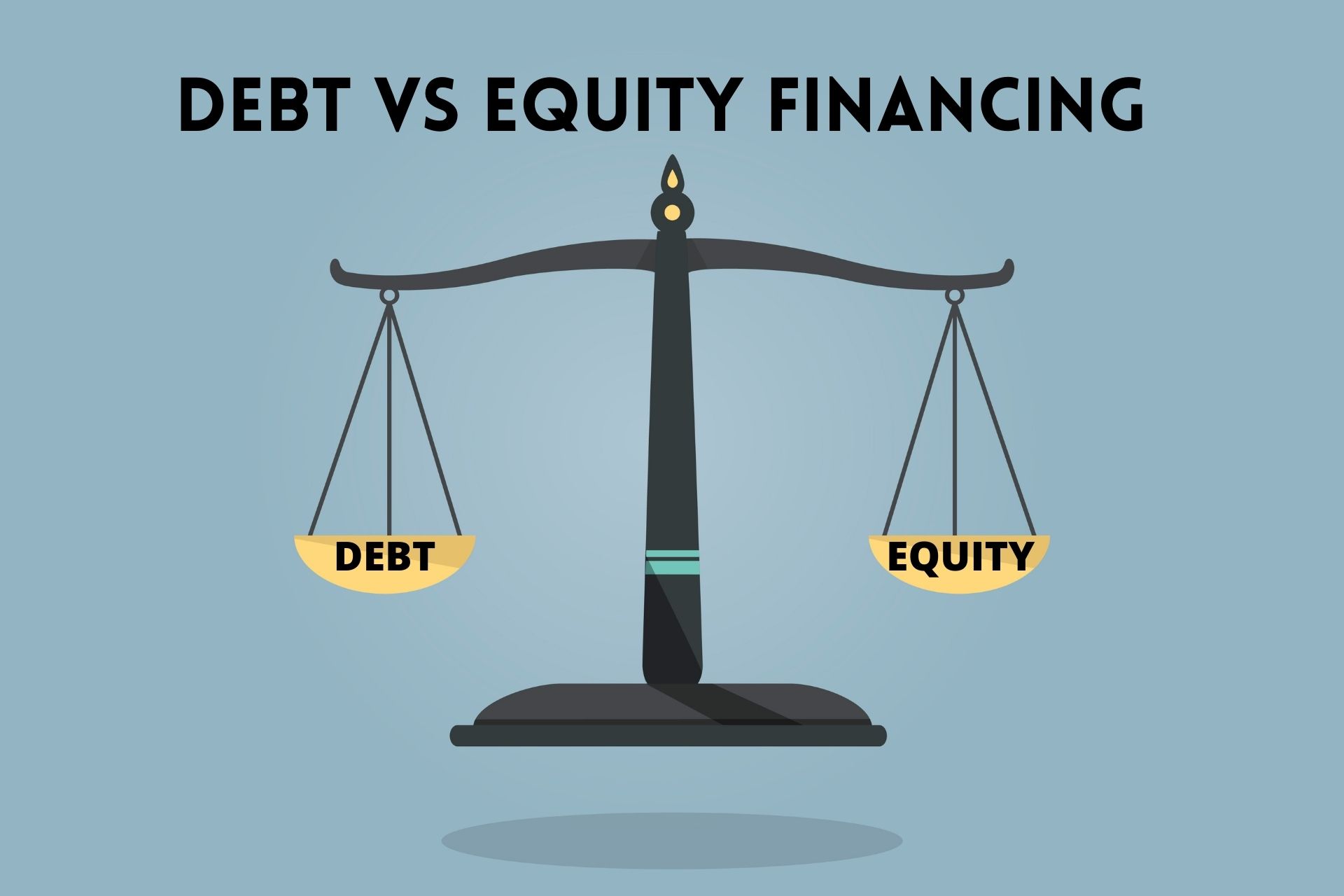

Finance
Which Are Forms Of Debt Financing?
Modified: December 30, 2023
Discover the various forms of debt financing and explore how they can help you fund your business or personal ventures. Unlock the potential of finance to achieve your goals.
(Many of the links in this article redirect to a specific reviewed product. Your purchase of these products through affiliate links helps to generate commission for LiveWell, at no extra cost. Learn more)
Table of Contents
Introduction
When it comes to funding business operations or expanding a company, there are various options available to entrepreneurs. One common form of financing is through debt. Debt financing involves borrowing funds from external sources that need to be repaid over time with interest.
In this article, we will explore the different forms of debt financing that businesses can utilize to meet their financial needs. These options range from traditional bank loans to innovative forms of financing that have emerged in recent years. Each option comes with its own advantages and considerations, and understanding these forms of debt financing is crucial for making informed decisions.
It is important to note that debt financing is not limited to businesses alone. Individuals can also utilize these financing options to fund personal ventures such as education, purchasing a home, or starting a new business. Regardless of the context, debt financing serves as a means to access capital and fuel economic growth.
Whether you are an entrepreneur seeking funding for your startup or an investor looking to diversify your portfolio, understanding the different forms of debt financing is essential. So, let’s dive in and explore various debt financing options available in the market today.
Equity Financing
Equity financing is a form of fundraising wherein a company sells shares of its ownership to investors in exchange for capital. Unlike debt financing, equity financing does not require repayment of the invested funds. Instead, investors become partial owners of the company and have a claim on its profits.
One of the main advantages of equity financing is that it does not create a debt obligation for the company. This means that if the business faces financial challenges or a downturn, the owners are not legally obligated to repay the investors. Additionally, equity financing allows businesses to access large sums of capital, making it an attractive option for startups or companies looking to expand rapidly.
There are different sources of equity financing, including angel investors, venture capital firms, and public offerings through the stock market. Angel investors are typically wealthy individuals who provide capital to early-stage startups in exchange for an ownership stake. Venture capital firms, on the other hand, specialize in funding high-growth companies in exchange for equity. Lastly, a company can choose to go public through an initial public offering (IPO), which allows it to sell shares to the general public.
While equity financing offers significant benefits, it also comes with some drawbacks. By selling ownership stakes, companies dilute their control and decision-making power. Additionally, the company’s financial performance becomes publicly available, which can be a disadvantage for businesses that prefer to keep their operations confidential.
Overall, equity financing provides a viable option for businesses seeking long-term capital without the pressure of debt repayment. By selling shares to investors, companies can secure funds to fuel growth and bring their vision to fruition.
Debt Financing
Debt financing is a common form of raising capital that involves borrowing funds from external sources with the promise of repayment over a specified period, typically with interest. Unlike equity financing, debt financing does not involve giving up ownership stakes in the company. Instead, it creates a contractual obligation to repay the borrowed amount along with interest within a predetermined timeline.
Many businesses opt for debt financing as it allows them to maintain control over their operations and decision-making while accessing the funds needed to fuel growth or meet financial obligations. Debt financing can be obtained from various sources, including banks, financial institutions, private lenders, and even trade creditors.
One of the key advantages of debt financing is the control it offers to businesses. Since debt holders do not have an ownership stake, there is no dilution of ownership or loss of decision-making authority for the company. Additionally, the interest payments made on the borrowed funds can often be tax-deductible, providing financial benefits to the business.
However, it is important to recognize the potential risks and challenges associated with debt financing. The borrowed funds need to be repaid, along with interest, regardless of the business’s financial performance. This means that the company must have a steady revenue stream to meet its repayment obligations without straining its operations.
Furthermore, interest rates, repayment terms, and covenants vary depending on the type of debt financing chosen. It is crucial for businesses to carefully evaluate the terms and conditions before committing to a particular debt financing option to ensure sustainability and financial stability.
Overall, debt financing provides businesses with a way to access capital for various purposes, such as acquiring assets, expanding operations, or covering operational costs. By utilizing debt financing effectively, companies can leverage borrowed funds to drive growth and achieve their financial objectives.
Different Forms of Debt Financing
There are various forms of debt financing available to businesses and individuals. Each form has its own characteristics and suitability depending on the specific needs and circumstances. Let’s explore some of the most common forms of debt financing:
- Bank Loans: Bank loans are a traditional and widely-used form of debt financing. Businesses or individuals borrow a specific amount from a bank and repay it over a specified period with interest. Bank loans can be secured, where the borrower provides collateral, or unsecured, based on the borrower’s creditworthiness.
- Bonds: Bonds are debt securities issued by governments, municipalities, or corporations to raise capital. Investors purchase bonds and receive regular interest payments. At maturity, the principal amount is repaid in full. Bonds are often used for long-term financing needs and can be traded on the bond market.
- Commercial Paper: Commercial paper is a short-term borrowing instrument issued by companies to meet immediate funding needs. It is typically used by large corporations with strong credit ratings. Commercial paper is unsecured and has a maturity of less than a year.
- Lines of Credit: A line of credit is a flexible form of debt financing that provides businesses with access to a pre-approved amount of funds. Businesses can draw on the line of credit when needed and only pay interest on the amount borrowed. It offers convenience and quick access to capital.
- Trade Credit: Trade credit is a form of debt financing extended by suppliers to their customers. It allows businesses to purchase goods or services and defer payment for a specific period of time. Trade credit is common in business-to-business transactions and can help improve cash flow.
- Factoring: Factoring is a financing method where a business sells its accounts receivable to a factor at a discount. The factor becomes responsible for collecting payment from customers. Factoring provides immediate cash flow to the business but at a reduced amount due to the discount.
- Lease Financing: Lease financing involves leasing assets instead of purchasing them outright. This allows businesses to conserve capital and use the leased assets while making regular lease payments. Lease financing is common for equipment, vehicles, or real estate.
- Asset-Based Lending: Asset-based lending involves using assets, such as inventory, accounts receivable, or property, as collateral for a loan. The amount borrowed is based on the value of the assets, and repayment is typically tied to the cash flow generated by the assets.
- Mezzanine Financing: Mezzanine financing is a hybrid form of debt and equity financing. It usually involves a high-interest loan or convertible debt that can be converted into equity if certain conditions are met. Mezzanine financing is often used for expansion or acquisition financing.
These are just a few examples of the different forms of debt financing available. Each option has its own advantages, requirements, and considerations. It is important for businesses or individuals to carefully assess their needs and financial situation before deciding on the most suitable form of debt financing.
Bank Loans
Bank loans are one of the most common and traditional forms of debt financing available to individuals and businesses alike. In this form of financing, borrowers, whether individuals or companies, approach banks or financial institutions to secure funds for a specific purpose. The borrowed amount, along with interest, is repaid over a predetermined period.
Bank loans are typically categorized into two types: secured loans and unsecured loans. Secured loans require borrowers to provide collateral, such as property or assets, as security for the loan. This collateral provides a form of assurance for the bank, reducing the risk they face when lending funds. Unsecured loans, on the other hand, do not require collateral but are typically backed by the borrower’s creditworthiness and financial stability.
There are several advantages to obtaining a bank loan. Firstly, banks offer competitive interest rates based on the borrower’s credit history and financial situation. Additionally, banks often have various types of loans available, allowing borrowers to choose a loan product that aligns with their specific needs, whether it is a personal loan, business loan, or mortgage loan.
However, bank loans also come with certain considerations. Banks have strict lending criteria and may require extensive documentation to assess the borrower’s creditworthiness. This can include providing financial statements, tax returns, and other relevant documents. Furthermore, obtaining a bank loan may take time due to the evaluation and approval process.
Before applying for a bank loan, it is important to assess the affordability of the repayments and determine the purpose of the loan. Additionally, borrowers should compare loan offers from different banks and consider the terms and conditions, interest rates, and repayment schedules.
Overall, bank loans offer a reliable and accessible form of debt financing for individuals and businesses. They provide an opportunity to secure funds for various purposes, whether it is funding a new business venture, purchasing a home or car, or addressing personal financial needs. By understanding the terms and conditions of bank loans, borrowers can make informed decisions and utilize this financing option effectively.
Bonds
Bonds are a form of debt financing commonly utilized by governments, municipalities, and corporations to raise capital. When an entity needs to borrow a significant amount of money, they can issue bonds to investors who are willing to lend the funds in exchange for regular interest payments and the return of their principal investment at maturity.
One of the key features of bonds is that they are tradable on the bond market. Investors who purchase bonds have the flexibility to sell them to other investors before maturity, allowing for liquidity. Bonds typically have a fixed face value and a predetermined interest rate, known as the coupon rate, which is paid out periodically to bondholders.
There are several types of bonds, including government bonds, municipal bonds, and corporate bonds. Government bonds, also known as sovereign bonds, are issued by national governments to fund public expenditures. Municipal bonds are issued by local governments to finance projects such as infrastructure development or education. Corporate bonds are issued by companies to raise capital for various purposes including expansion, acquisitions, or refinancing existing debt.
One of the advantages of investing in bonds is the relative stability and predictability of interest payments. Bondholders can rely on receiving regular interest income throughout the life of the bond. Additionally, bonds are ranked based on the creditworthiness of the issuer, with higher-rated bonds offering lower interest rates. This allows investors to choose bonds with the risk and return profile that aligns with their investment goals.
However, investing in bonds also comes with considerations. Bonds are subject to interest rate risk, meaning that their value can fluctuate inversely with interest rate changes. When interest rates rise, bond prices tend to fall, potentially impacting the overall return on investment. Additionally, bonds are also subject to credit risk, where there is a risk of default by the issuer, especially for lower-rated or high-yield bonds.
Before investing in bonds, individuals and institutions should carefully assess the creditworthiness of the issuer, evaluate the interest rate environment, and consider their investment objectives. Bonds can be purchased through brokerages, financial institutions, or directly from the issuer.
In summary, bonds are a prevalent form of debt financing where issuers borrow funds from investors in exchange for regular interest payments and the return of principal at maturity. Bonds offer stability, predictability, and flexibility for investors while providing issuers with access to long-term capital.
Commercial Paper
Commercial paper is a short-term debt instrument that allows companies to meet their immediate funding needs. It is an unsecured promissory note issued by corporations to raise capital quickly. Typically, commercial paper has a maturity of less than a year, ranging from a few days to nine months.
Commercial paper is primarily used by large, creditworthy corporations with a strong financial standing. Investors, such as financial institutions and money market funds, purchase commercial paper at a discount, providing cash to the issuing company. The discount rate is the difference between the face value of the commercial paper and the purchase price.
One of the main advantages of commercial paper is its flexibility and efficiency. Companies can quickly raise funds through the issuance of commercial paper without the need for lengthy approval processes or extensive collateral. Additionally, commercial paper offers competitive interest rates, making it an attractive option for investors seeking short-term investments.
However, investing in commercial paper comes with certain risks. Since commercial paper is unsecured, there is a risk of default if the issuing company faces financial difficulties. Investors should carefully assess the creditworthiness and reputation of the issuer before investing in their commercial paper.
In the United States, commercial paper is regulated by the Securities and Exchange Commission (SEC) and is typically issued in denominations of $100,000 or larger. It plays a crucial role in the money market, providing corporations with a convenient and cost-effective way to meet their short-term funding requirements.
Commercial paper can be an attractive financing option for companies looking to bridge temporary funding gaps or manage their cash flow. By utilizing commercial paper effectively, businesses can access short-term capital at competitive rates and ensure the smooth operation of their operations.
Lines of Credit
Lines of credit are a flexible form of debt financing that provides borrowers with access to a predetermined amount of funds that can be used as needed. In essence, a line of credit functions like a credit card, allowing borrowers to withdraw funds up to a specified limit and repay those funds over time.
Lines of credit can be obtained from various sources, including banks, financial institutions, or even through credit cards. They are commonly utilized by both individuals and businesses to cover short-term financing needs or manage cash flow fluctuations.
One of the key advantages of lines of credit is their flexibility. Borrowers have the freedom to withdraw funds as needed, only paying interest on the amount actually borrowed. This flexibility allows for convenient access to capital during unexpected expenses, seasonal fluctuations, or other financial needs that may arise.
Lines of credit can be classified into two categories: secured and unsecured. Secured lines of credit require borrowers to provide collateral, such as property or investments, as security for the funds borrowed. Unsecured lines of credit, on the other hand, do not require collateral but are based on the borrower’s creditworthiness and income.
It is important to note that lines of credit have certain considerations. Depending on the terms and conditions of the line of credit, there may be fees associated with setting up or maintaining the line. Additionally, interest rates on lines of credit may vary depending on the borrower’s credit history and the prevailing market rates.
Before obtaining a line of credit, borrowers should carefully assess their financial needs and repayment capabilities. Proper budgeting and financial planning are essential to ensure that the line of credit is used responsibly and payments can be made on time.
Lines of credit can serve as a valuable tool for managing short-term financial needs and providing a safety net for individuals and businesses. By having access to a predefined amount of capital, borrowers can navigate unforeseen circumstances or seize opportunities that may arise, maintaining financial stability and flexibility.
Trade Credit
Trade credit is a form of debt financing that occurs when suppliers allow their customers to purchase goods or services on credit, deferring payment until a later date. It is a common practice in business-to-business transactions, where the supplier extends credit terms to the buyer, typically for a specified period of time.
Trade credit provides several benefits for both the buyer and the supplier. For buyers, it offers a convenient and flexible way to manage cash flow. They can acquire the necessary goods or services upfront and delay payment until a future date, allowing them to generate revenue or sell the goods before the payment is due.
On the other hand, suppliers offer trade credit to attract customers and maintain strong relationships. By providing credit, suppliers can secure loyal customers and stimulate sales. They can also leverage trade credit as a marketing tool, promoting their products or services as an enticing option for businesses that require flexibility in payment terms.
The terms of trade credit can vary depending on the agreement between the buyer and the supplier. The terms often include the credit period, which specifies the length of time the buyer has to make payment, and any applicable discounts for early payment. For example, the terms might be “net 30,” meaning that the buyer must pay the invoice within 30 days.
While trade credit offers advantages, both the buyer and the supplier need to consider potential drawbacks. Buyers must carefully manage their credit obligations to avoid accumulating excessive debt or straining their cash flow. Late payments can damage relationships with suppliers and may result in penalties or loss of credit terms.
Suppliers, on the other hand, face the risk of non-payment or late payment from their customers, which can impact their own cash flow and profitability. They must carefully assess the creditworthiness of potential customers and set appropriate credit limits to mitigate these risks.
Trade credit is an essential component of the business ecosystem, providing a mutually beneficial arrangement for both buyers and suppliers. By utilizing trade credit effectively, businesses can manage their working capital, foster strong relationships, and facilitate growth and profitability.
Factoring
Factoring is a form of debt financing that allows businesses to convert their accounts receivable into immediate cash. It involves selling outstanding invoices or accounts receivable to a third-party financial institution known as a factor at a discount. The factor then assumes the responsibility of collecting payment from the customers.
Factoring provides businesses with quick access to working capital, enabling them to manage cash flow and meet immediate financial obligations. The amount of funds a business can receive through factoring is typically a percentage of the total value of the invoices being sold, known as the advance rate. The factor deducts a fee for their services and any other applicable charges before releasing the remaining funds to the business.
One of the key advantages of factoring is the speed at which funds can be obtained. Unlike traditional forms of financing, factoring does not require extensive credit checks or collateral. Factoring is based on the creditworthiness of the business’s customers rather than the business itself, making it an accessible option for businesses with limited credit history.
Factoring can be particularly beneficial for small businesses or companies experiencing rapid growth, as it provides them with immediate cash to cover operational expenses, invest in new opportunities, or expand their business. It also reduces the need for businesses to wait for extended periods for customer payments, enhancing liquidity.
However, it is important to note that factoring comes with certain considerations. Businesses should carefully assess the pricing structure and terms offered by factors to ensure it aligns with their financial objectives. Factoring fees can vary and may depend on factors such as the creditworthiness of the customers, the volume of invoices, and the repayment terms.
Additionally, factoring involves the transfer of accounts receivable to a third party, which means the factor takes over the responsibility of collecting payments. This can affect the relationship between the business and its customers, as the factor may communicate directly with the customers for payment collection.
In summary, factoring provides businesses with a way to quickly convert accounts receivable into cash by selling invoices to a third-party factor. It offers increased cash flow and flexibility, making it an attractive option for businesses in need of immediate funds. By considering the terms and fees associated with factoring, businesses can effectively leverage this form of debt financing to meet their financial needs.
Lease Financing
Lease financing, also known as equipment leasing, is a form of debt financing that allows businesses and individuals to acquire the use of assets without purchasing them outright. In lease financing, the lessor (the owner of the asset) provides the lessee (the business or individual) with the right to use the asset in exchange for regular lease payments over a specified period.
Lease financing is commonly used for acquiring equipment, machinery, vehicles, or even real estate. It provides businesses with the flexibility to access the necessary resources without the upfront costs or long-term ownership commitments associated with purchasing the assets outright.
There are two main types of lease financing: operating leases and capital leases. An operating lease is a short-term arrangement where the lessor retains ownership of the leased asset. It allows businesses to use the asset for a specific period, typically less than the asset’s useful life. On the other hand, a capital lease, also known as a finance lease, is a long-term lease that is similar to a purchase agreement. The lessee has the benefits and risks associated with ownership and may have the option to purchase the asset at the end of the lease term.
Lease financing offers several advantages for businesses. Firstly, it allows them to conserve capital and maintain liquidity since they do not need to make a significant upfront purchase. Lease payments are spread out over the lease term, making it easier for businesses to budget and manage cash flow.
Additionally, lease financing provides businesses with access to the latest equipment and technology without the need for frequent upgrades or disposal of outdated equipment. This can enhance operational efficiency and competitiveness, especially in industries that rely on advanced technology.
However, there are certain considerations with lease financing. Businesses should carefully evaluate the lease terms, including the lease period, lease payments, and any obligations at the end of the lease term. It is important to understand the total cost of leasing compared to the cost of purchasing the asset outright to ensure that lease financing is the most cost-effective option.
In summary, lease financing provides businesses and individuals with a flexible and cost-effective way to acquire the use of assets without purchasing them outright. It allows for greater liquidity, flexibility, and access to the latest technology. By carefully assessing lease terms and their financial objectives, lessees can utilize lease financing to meet their specific needs and drive business success.
Asset-Based Lending
Asset-based lending is a form of debt financing where businesses use their assets as collateral to secure a loan. Unlike traditional loans that primarily assess the borrower’s creditworthiness, asset-based lending focuses on the value and liquidity of the borrower’s assets. These assets can include accounts receivable, inventory, equipment, real estate, or other valuable assets that can be easily liquidated if needed.
In asset-based lending, the lender evaluates the collateral and provides a loan amount based on a percentage of the appraised value of the assets. This percentage, known as the advance rate, can vary depending on the type of assets and the level of risk involved. The borrower then repays the loan according to mutually agreed-upon terms, including interest and fees.
Asset-based lending offers several advantages for businesses. It provides a way to unlock the value of their assets and access capital without the need for traditional creditworthiness requirements. This can be particularly beneficial for businesses with limited credit history or those undergoing financial challenges.
Asset-based lending offers more flexibility compared to conventional loans. As the borrower’s assets serve as collateral, lenders are often willing to lend larger amounts at competitive interest rates. Additionally, businesses can use the funds obtained through asset-based lending for various purposes, such as financing growth initiatives, managing cash flow, or restructuring existing debt.
However, it is important for businesses to carefully consider the potential risks associated with asset-based lending. Failure to repay the loan based on the agreed terms can result in the loss of the collateral, putting the business at risk of losing valuable assets. Moreover, businesses should evaluate the costs involved in asset-based lending, including appraisal fees, loan origination fees, and monitoring fees.
Asset-based lending is commonly utilized by businesses in industries such as manufacturing, retail, and construction, where assets such as inventory or accounts receivable hold significant value. It allows businesses to leverage their assets to access capital and support their ongoing operations or expansion plans.
In summary, asset-based lending provides businesses with an alternative and flexible way to secure financing by using their assets as collateral. It offers an opportunity to unlock the value of assets and access capital based on their liquidity. By carefully assessing the terms, costs, and risks associated with asset-based lending, businesses can make informed decisions and leverage their assets to support their financial needs.
Mezzanine Financing
Mezzanine financing is a hybrid form of debt and equity financing that provides businesses with a flexible source of capital. It bridges the gap between senior debt (secured loans) and equity financing. Mezzanine financing typically takes the form of loans or convertible debt, offering businesses an opportunity to secure funds for growth or other strategic initiatives.
Mezzanine financing is often used by businesses looking to expand operations, undertake acquisitions, or finance management buyouts. It is a popular option for companies that have a solid track record and value growth potential but may not meet the strict criteria of traditional lenders or equity investors.
One key characteristic of mezzanine financing is that it usually comes with a higher interest rate than traditional loans due to the increased risk involved. However, what sets mezzanine financing apart is its unique structure that combines traditional debt with equity features.
Mezzanine loans may have repayment terms that can be customized to the borrower’s needs. For example, the repayment may be structured with a combination of periodic interest payments and a lump sum payment at maturity. Some mezzanine loans also offer an equity kicker, which provides the lender with the right to convert the loan into equity ownership in the company at a predetermined conversion price.
Another attractive feature of mezzanine financing is that it can provide flexible repayment options. While it is structured as debt, repayment may be tied to the company’s cash flow or funded from the proceeds of a future liquidity event, such as an initial public offering (IPO) or sale of the company.
The main advantage of mezzanine financing is that it allows companies to access a substantial amount of capital without diluting existing ownership significantly. It offers a flexible and tailored financing solution that meets the specific needs of the business and helps facilitate its growth strategy.
On the other hand, mezzanine financing may come with higher costs and increased complexity compared to traditional debt financing. It requires careful evaluation of the terms, costs, and potential risk-return trade-offs associated with the financing arrangement.
In summary, mezzanine financing serves as a valuable option for businesses seeking additional capital to fund growth plans, acquisitions, or other strategic initiatives. By combining elements of debt and equity, mezzanine financing offers flexibility, customization, and the potential for future equity participation. Businesses should carefully assess the terms and consider the impact on their financial structure before entering into a mezzanine financing arrangement.
Conclusion
Debt financing is a crucial aspect of the financial landscape, providing individuals and businesses with the means to access capital for various needs. In this article, we explored different forms of debt financing, including equity financing, bank loans, bonds, commercial paper, lines of credit, trade credit, factoring, lease financing, asset-based lending, and mezzanine financing.
Each form of debt financing offers unique features and benefits, allowing borrowers to choose the option that aligns with their specific financial objectives and circumstances. From traditional bank loans to innovative financing methods like factoring or mezzanine financing, there is a wide range of choices available to accommodate different needs.
Equity financing provides businesses with long-term capital in exchange for ownership stakes, while debt financing allows companies to borrow funds with a contractual obligation to repay. Bank loans offer stability and flexibility, while bonds provide access to capital via the capital markets. Commercial paper offers short-term financing solutions, while lines of credit provide businesses with flexible access to funds as needed. Trade credit allows for convenient payment terms between suppliers and buyers, while factoring enables businesses to convert accounts receivable into immediate cash. Lease financing allows companies to use assets without the need for ownership, while asset-based lending uses assets as collateral for loans. Mezzanine financing bridges the gap between debt and equity, providing businesses with flexible capital structures.
Choosing the right form of debt financing involves understanding the specific needs, financial situation, and risk tolerance of the borrower. Considerations such as interest rates, repayment terms, creditworthiness, and the impact on the overall financial structure should be carefully evaluated.
In conclusion, debt financing plays a vital role in the financial ecosystem, enabling individuals and businesses to access capital for growth, operations, and other financial needs. By understanding the various forms of debt financing available and making informed decisions, borrowers can leverage these options effectively to support their financial goals and drive success.














